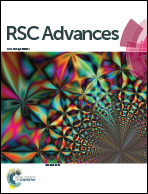Unusual anti-bacterial behavior and corrosion resistance of magnesium alloy coated with diamond-like carbon
Abstract
Magnesium and magneisum alloys are promising materials in degradable biomedical implants and also have inherent anti-bacterial ability. A surface coating can reduce the surface corrosion rate of magnesium-based materials without compromising the anti-bacterial properties. In this work, diamond-like carbon (DLC) coatings are deposited on the AZ31 Mg alloy by one-step plasma immersion ion implantation and deposition (PIII&D). After PIII&D, the corrosion current density diminishes largely from 3.17 × 10−4 A cm−2 to 6.53 × 10−5 A cm−2. The pH and amounts of leached magnesium ions are also significantly reduced. Meanwhile, 3 × 104 bacteria seeded on the AZ31-DLC are completely annihilated within 6 hours in contrast to 5 × 103 live ones left on the untreated AZ31 and more than 6 × 108 on Si-DLC (DLC deposited on Si). The favorable anti-bacterial behavior of AZ31-DLC is attributed to the combined effects of favorable bacteria adhesion on the DLC surface and local release of hydroxyl and magnesium ions from the magnesium substrate via defects in the DLC films.


 Please wait while we load your content...
Please wait while we load your content...